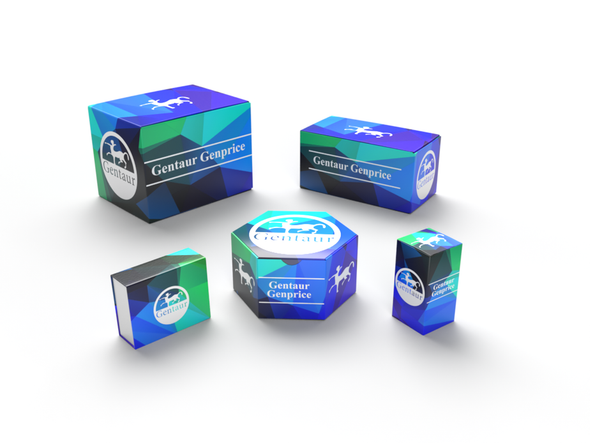749
Mouse Glyoxalase domain-containing protein 4 (GLOD4) ELISA Kit | KTE71486
- SKU:
- 749-KTE71486
- Availability:
- Usually ships in 5 working days
Description
Mouse Glyoxalase domain-containing protein 4 (GLOD4) ELISA Kit | KTE71486 | Gentaur UK, US & Europe Distribution
Application: This Mouse Glyoxalase domain-containing protein 4 (GLOD4) ELISA Kit employs a two-site sandwich ELISA to quantitate GLOD4 in samples. An antibody specific for GLOD4 has been pre-coated onto a microplate. Standards and samples are pipetted into the wells and anyGLOD4 present is bound by the immobilized antibody. After removing any unbound substances, a biotin-conjugated antibody specific for GLOD4 is added to the wells. After washing, Streptavidin conjugated Horseradish Peroxidase (HRP) is added to the wells. Following a wash to remove any unbound avidin-enzyme reagent, a substrate solution is added to the wells and color develops in proportion to the amount of GLOD4 bound in the initial step. The color development is stopped and the intensity of the color is measured.
Detection Method: Colorimetric
Conjugate: N/A
Sample Type: Cell culture supernatants#Serum#Plasma#Other biological fluids
Assay Type: Multiple steps standard sandwich ELISA assay with a working time of 3-5 hours. It depends on the experience of the operation person.
Kit Component: • Mouse Glyoxalase domain-containing protein 4 microplate
• Mouse Glyoxalase domain-containing protein 4 standard
• Mouse Glyoxalase domain-containing protein 4 detect antibody
• Streptavidin-HRP
• Standard diluent
• Assay buffer
• HRP substrate
• Stop solution
• Wash buffer
• Plate covers
Features & Benefits: Mouse Glyoxalase domain-containing protein 4 (GLOD4) ELISA Kit has high sensitivity and excellent specificity for detection of Mouse GLOD4. No significant cross-reactivity or interference between Mouse GLOD4 and analogues was observed.
Calibration Range: Please inquire
Limit Of Detection: Please inquire
Usage Note: • Do not mix components from different kit lots or use reagents beyond the kit expiration date.
• Allow all reagents to warm to room temperature for at least 30 minutes before opening.
• Pre-rinse the pipet tip with reagent, use fresh pipet tips for each sample, standard and reagent to avoid contamination.
• Unused wells must be kept desiccated at 4 °C in the sealed bag provided.
• Mix Thoroughly is very important for the result. It is recommended using low frequency oscillator or slight hand shaking every 10 minutes.
• It is recommended that all samples and standards be assayed in duplicate or triplicate.
Storage Instruction: The unopened kit should be stored at 2 - 8°C. After opening, please store refer to protocols.
Shipping: Gel pack with blue ice.
Precaution The product listed herein is for research use only and is not intended for use in human or clinical diagnosis. Suggested applications of our products are not recommendations to use our products in violation of any patent or as a license. We cannot be responsible for patent infringements or other violations that may occur with the use of this product.
Background: C17orf25 is divided into 10 exons and 9 introns, spanning 23 kb of genomic DNA. The mRNA expression of C17orf25 was decreased in hepatocellular carcinoma samples as compared to adjacent noncancerous liver tissues from the same patients. The transfection of C17orf25 into the hepatocellular carcinoma cell SMMC7721 and overexpression could inhibit the cell growth. The above results indicate that C17orf25 is a novel human gene, and the cloning and preliminary characterization of C17orf25 is a prerequisite for further functional analysis of this novel gene in human hepatocellular carcinoma.The human C17orf25 gene is one of thirteen genes cloned from a region displaying a high score of loss of heterozygosity within chromosome 17p13.3 in human hepatocellular carcinoma in China.
Alternative Names: GLOD4; C17orf25; CGI-150; HC71;
Search name: GLOD4; C17orf25; CGI-150; HC71;
Tag: GLOD4










